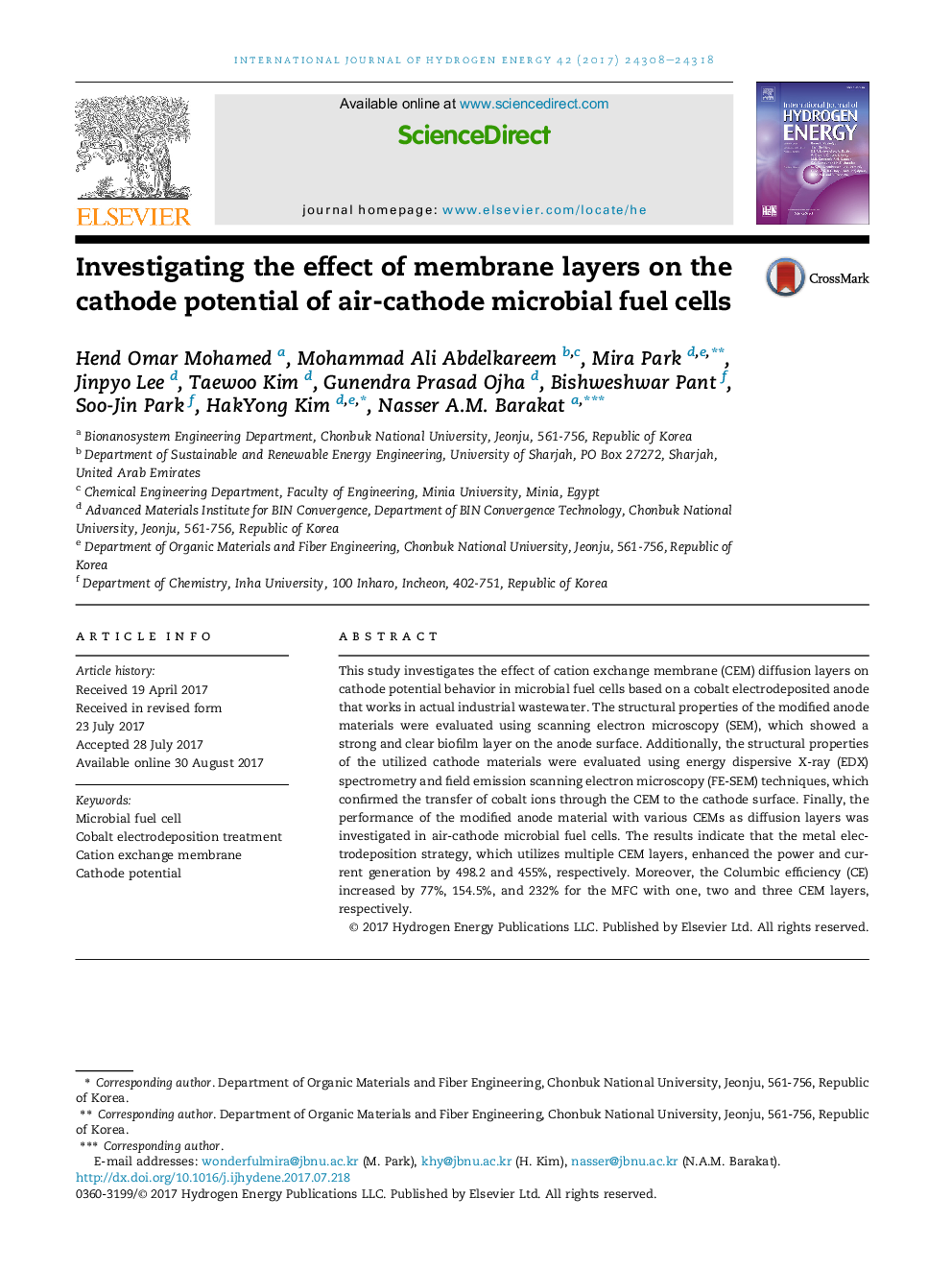| Article ID | Journal | Published Year | Pages | File Type |
|---|---|---|---|---|
| 5145221 | International Journal of Hydrogen Energy | 2017 | 11 Pages |
â¢Multilayer-cation exchange membrane enhanced cathode potential of MFC.â¢Electro deposition of cobalt significantly improved the anode activity.â¢Multilayer CEM and Co deposition increased power by 498.2% and current by 455%.
This study investigates the effect of cation exchange membrane (CEM) diffusion layers on cathode potential behavior in microbial fuel cells based on a cobalt electrodeposited anode that works in actual industrial wastewater. The structural properties of the modified anode materials were evaluated using scanning electron microscopy (SEM), which showed a strong and clear biofilm layer on the anode surface. Additionally, the structural properties of the utilized cathode materials were evaluated using energy dispersive X-ray (EDX) spectrometry and field emission scanning electron microscopy (FE-SEM) techniques, which confirmed the transfer of cobalt ions through the CEM to the cathode surface. Finally, the performance of the modified anode material with various CEMs as diffusion layers was investigated in air-cathode microbial fuel cells. The results indicate that the metal electrodeposition strategy, which utilizes multiple CEM layers, enhanced the power and current generation by 498.2 and 455%, respectively. Moreover, the Columbic efficiency (CE) increased by 77%, 154.5%, and 232% for the MFC with one, two and three CEM layers, respectively.
Graphical abstractDownload high-res image (393KB)Download full-size image
